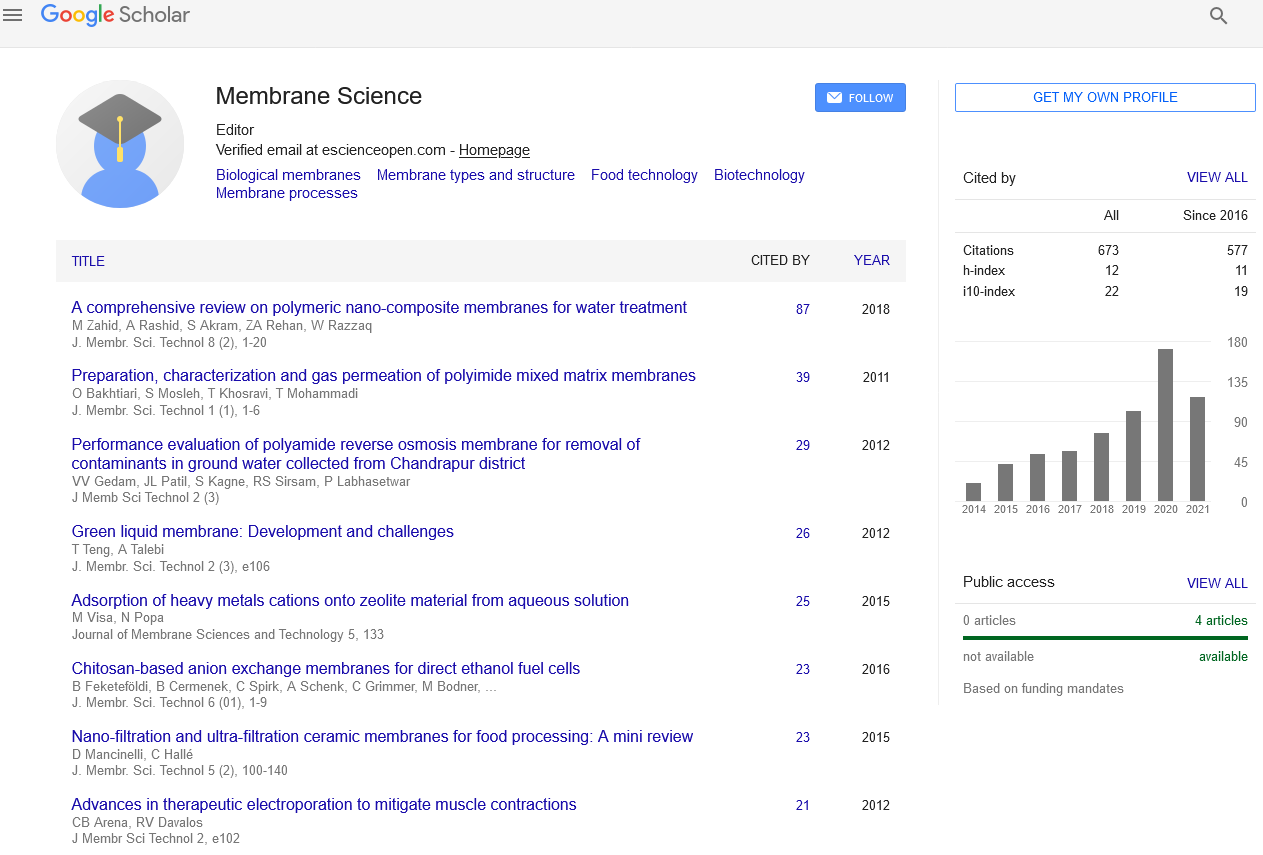Indexed In
- Open J Gate
- Genamics JournalSeek
- Ulrich's Periodicals Directory
- RefSeek
- Directory of Research Journal Indexing (DRJI)
- Hamdard University
- EBSCO A-Z
- OCLC- WorldCat
- Proquest Summons
- Scholarsteer
- Publons
- Geneva Foundation for Medical Education and Research
- Euro Pub
- Google Scholar
Useful Links
Share This Page
Journal Flyer

Open Access Journals
- Agri and Aquaculture
- Biochemistry
- Bioinformatics & Systems Biology
- Business & Management
- Chemistry
- Clinical Sciences
- Engineering
- Food & Nutrition
- General Science
- Genetics & Molecular Biology
- Immunology & Microbiology
- Medical Sciences
- Neuroscience & Psychology
- Nursing & Health Care
- Pharmaceutical Sciences
Abstract
Effect of Foulant Layers on the Rejection of Arsenite [As (III)] by Nanofiltration Membranes
Mustapha Chabane and Benamar Dahmani
The effect of membrane fouling on the rejection efficiency of Arsenite species by nanofiltration membranes were investigated in this research. Two nanofiltration membranes (DESAL DL and N30F) were fouled by various compounds including humic acid; sodium alginate, colloidal silica and CaSO4 and we will evaluate the effect of flux decline and membranes rejection efficiency of As (III) from pH range between 6 and 11. The effect of the interaction mode between foulant layers; membrane and As (III) is related to the difference of membranes characteristics such as MWCO, roughness, hydrophobic/hydrophilic character and the variation of surface charge at different pH values. The monitoring of the rejection of As (III) in the feed and permeate solution will present the decline on permeate flux and an increase of arsenic rejection depending to each type of foulants. The properties of foulants were found to be an important factor for determination the transport of arsenite through the fouling layers. The results show the high rejection values of arsenite ions for membrane DESAL DL compared to the N30F membrane. For pH range situated between 6 to 11, the application of humic acid as foulant substance gives high removal efficiency of As (III) compared to other compounds, with very high values of rejection at pH=11 with 90% for membrane DESAL DL and 37% for N30F membrane. It has been found that the mechanism of size exclusion of arsenite As (III) is predominant for the membrane DESAL DL.


